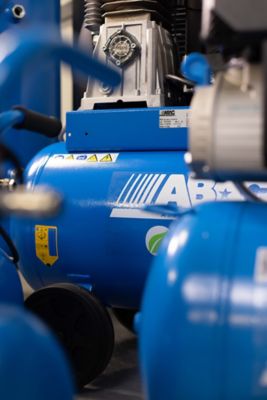No. For occasional use, regularly draining the tank is usually enough. Add a small in-line separator only if you spray-paint or see moisture at the tool.
Setting up and maintaining a DIY air compressor is straightforward when you follow the right steps. This guide covers essential installation tips, routine care, troubleshooting advice, and answers to common questions, helping you get reliable performance and long-lasting use from your compressor. Whether you're a newcomer or looking to improve your setup, you'll find practical guidance for safe, effective operation.
Unbox, Inspect, and Read the Model Sheet
- Check packaging and frame for transport marks.
- Confirm the model code exactly matches your order.
- Locate the user manual and warranty card; skim the model‑specific checks (oil level for lubricated units, intake filter position, start/stop controls).
- Direct‑drive vs belt‑drive: if your unit is direct‑drive, keep the cooling grill clear. If belt‑drive, keep fingers and clothing away from the belt guard.
Choose a Good Spot in the Garage or in the Workshop
Aim: cool, clean air; easy access; short hose runs.
- Place on a level, rigid surface.
- Leave space on all sides so air can circulate, and you can reach the drain valve and controls.
- Avoid hot corners or dusty zones (e.g.grinding/sanding area).
- If noise is an issue, increase distance from where you work or add simple rubber feet.
Power and Protection
- Match the voltage/phase on the rating plate.
- Plug into a properly rated socket close to the unit; avoid long, thin extension leads that cause voltage drop.
- Keep the cable route clean and safe—no trip hazards and no sharp bends.
- If hard wiring is required, use a local isolator and follow local electrical regulations.
Fit the Basics
- Intake filter: install firmly as shown in the ABAC manual; keep it accessible for periodic cleaning/replacement.
- Wheels kit: install firmly as shown in the ABAC manual; Periodically check the tightening of the screws.
- Outlet side: fit the quick coupler/connector you use across your tools and your main hose.
- Regulator (optional): if a tool specifies a working pressure, add a simple regulator at the bench or in-line.
- Moisture control (optional): if you see water at the tool or you’re spray-painting, add a small in-line water separator or a basic filter near the bench.
Hose Length & Bore
- Keep runs short and avoid tight coils.
- If you must go longer, step up the hose bore to reduce pressure drop.
First Start and Quick Leak Check
- Close the outlet and start the compressor to build pressure.
- Listen for unusual sounds or vibration; stop and re-check if anything seems off.
- Connect the hose and a tool; blow through briefly to clear the line.
- Spray soapy water on threaded joints—bubbles = leak. Reseat the fitting with PTFE tape if needed.
- Drain the receiver after this first run to remove initial condensate.
Simple Care for DIY Use
- Close the outlet and start the compressor to build pressure.
- Listen for unusual sounds or vibration; stop and re-check if anything seems off.
- Connect the hose and a tool; blow through briefly to clear the line.
- Spray soapy water on threaded joints—bubbles = leak. Reseat the fitting with PTFE tape if needed.
- Drain the receiver after this first run to remove initial condensate.
Mini Troubleshooting (DIY)
- Trips at start: extension lead too long/thin → plug directly into a properly rated socket or use a shorter, heavier-duty lead.
- Weak tool power: hose is too narrow/long or regulator set low → shorten the run or step up bore; verify pressure at the tool while it runs.
- Water in the line: drain the tank; if it persists or you paint, add a small in-line separator or basic filter.
Frequently Asked Questions (FAQs)
Prefer a direct plug into a properly rated socket. If you must use an extension, keep it short and heavy-duty to avoid voltage drop.
Check the tool label. Fit a simple regulator if needed and set the outlet pressure accordingly; recheck the tool while it runs.
After every session. Moisture builds quickly, even during short jobs.
Follow the ABAC model manual for the specified grade and intervals. Some ABAC piston models are oil-free—if yours is, skip oil checks.














